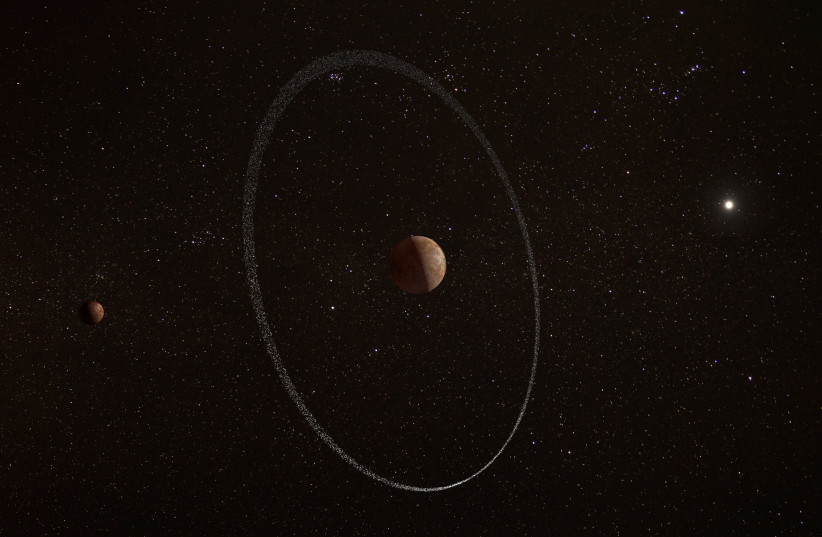Astronomers discover new ring system in Solar System - study

The findings may lead researchers to take a whole new approach to ring formation theories.
A team of researchers discovered a new ring system within the Solar System, according to a new study.
According to the peer-reviewed study, which was led by the Federal University of Rio de Janeiro and published in the scientific journal Nature on Wednesday, the team discovered the rings of the dwarf planet Quaoar using a highly sensitive camera called HiPERCAM, which is mounted on the largest optical telescope in the world, the Gran Telescopio Canarias on La Palma.
Notably, the rings orbit much further away from Quaoar than Saturn's rings revolve around it, a fact that may lead to the formulation of new theories about ring formation.
As Quaoar's rings are too small to see directly in an image, the researchers observed an occultation when the planet blocked the light from a background star while orbiting the Sun. Although this lasted under a minute, two dips in light were observed before and after, suggesting that a ring system is present.
Ring systems are rare in the Solar System, with only two planets besides Jupiter, Saturn, Uranus and Neptune possessing rings: Chariklo and Haumea.
These ring systems are able to sustain themselves because they orbit close to their respective planets so tidal forces prevent the material within them from accumulating and forming moons.
Roche limit
Interestingly, Quaoar's ring system is twice as far from the planet as what was previously believed to be the highest possible radius according to the Roche limit - the limit of where ring systems are believed to be able to survive.
"Up to now, all known dense rings were located close enough to their parent bodies, being inside the Roche limit, where tidal forces prevent material with reasonable densities from aggregating into a satellite," the study read.
"Here we report observations of an inhomogeneous ring around the trans-Neptunian body Quaoar. This trans-Neptunian object has an estimated radius of 555 km and possesses a roughly 80-km satellite (Weywot) that orbits at 24 Quaoar radii. The detected ring orbits at 7.4 radii from the central body, which is well outside Quaoar’s classical Roche limit, thus indicating that this limit does not always determine where ring material can survive."
"It was unexpected to discover this new ring system in our Solar System, and it was doubly unexpected to find the rings so far out from Quaoar, challenging our previous notions of how such rings form," said Vik Dhillon, a co-author of the study and a professor at the Department of Physics and Astronomy at the University of Sheffield. "The use of our high-speed camera - HiPERCAM - was key to this discovery as the event lasted less than one minute and the rings are too small and faint to see in a direct image."
“Everyone learns about Saturn's magnificent rings when they're a child, so hopefully this new finding will provide further insight into how they came to be,” he added.
Jerusalem Post Store
`; document.getElementById("linkPremium").innerHTML = cont; var divWithLink = document.getElementById("premium-link"); if (divWithLink !== null && divWithLink !== 'undefined') { divWithLink.style.border = "solid 1px #cb0f3e"; divWithLink.style.textAlign = "center"; divWithLink.style.marginBottom = "15px"; divWithLink.style.marginTop = "15px"; divWithLink.style.width = "100%"; divWithLink.style.backgroundColor = "#122952"; divWithLink.style.color = "#ffffff"; divWithLink.style.lineHeight = "1.5"; } } (function (v, i) { });

